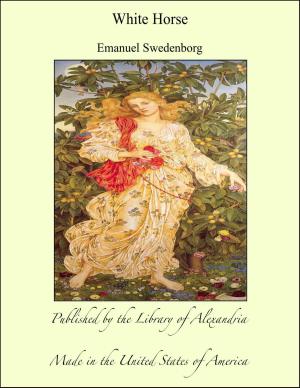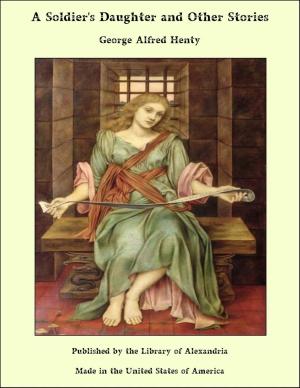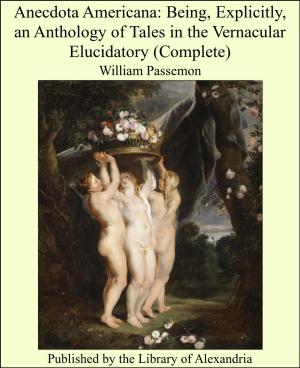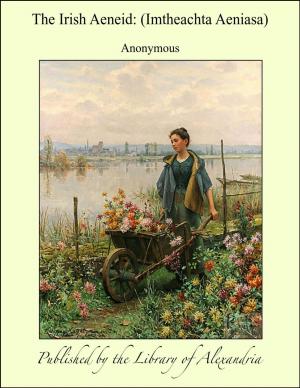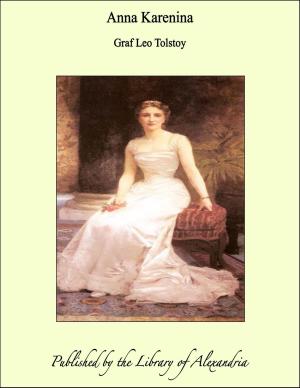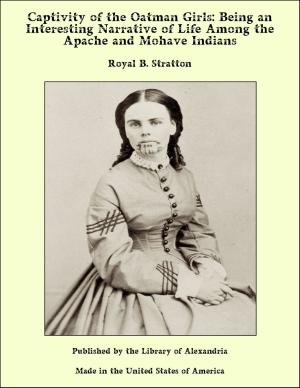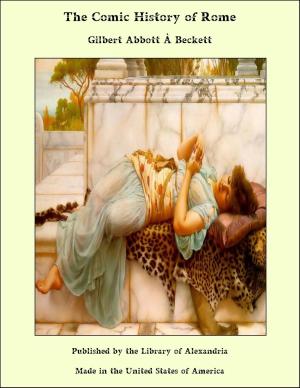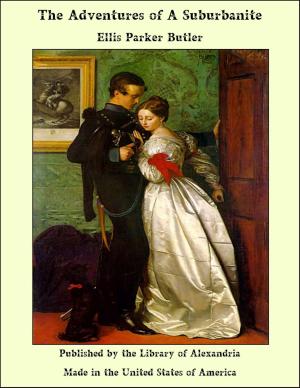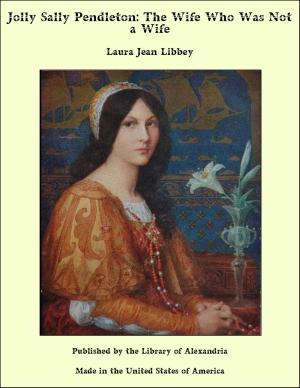In Honour Bound: An Original Play in One Act (Suggested by Scribe's Five Act Comedy, "Une Chaine.")
Nonfiction, Religion & Spirituality, New Age, History, Fiction & Literature| Author: | Sydney Grundy | ISBN: | 9781465571830 |
| Publisher: | Library of Alexandria | Publication: | July 29, 2009 |
| Imprint: | Library of Alexandria | Language: | English |
| Author: | Sydney Grundy |
| ISBN: | 9781465571830 |
| Publisher: | Library of Alexandria |
| Publication: | July 29, 2009 |
| Imprint: | Library of Alexandria |
| Language: | English |
The original letters were acquired by Mr. William K. Bixby of St. Louis, and, at the urgent request of the Society of the Dofobs, of which he is a highly esteemed and honored member, turned over to the society with the understanding that they should be published for presentation to members only. It was specified also that great care should be exercised in going over the letters, that no apparent confidences should be violated and that all private and personal references, which might wound the feelings of the living or seem to speak ill of the dead, should be eliminated. It is indeed remarkable that in the large number of letters presented there was practically nothing which called for elision, nothing in the lighter mood which breathed a spirit beyond the innocent limits of good-natured banter. The work of the editors was consequently easy and grateful, and the task one of delight. It is not claimed that these love letters, so-called, comprise the entire correspondence on Hawthorne's part between Miss Peabody and himself during the three-and-one-half years of courtship. Naturally a series of letters begun sixty-eight years ago, with all the vicissitudes of a shifting life, would not be preserved intact. But while some letters have been lost or destroyed, and others may not have been permitted for one reason or another to leave the possession of the family, the continuity here preserved is practically as complete as could be desired and fully illustrative of the qualities which make them so worthy of publication. In giving these letters to its members the society has conformed strictly to the exactions of the manuscript save in a few cases perhaps where haste on the part of the writer omitted a word, slightly obscuring the sense. It has been deemed advisible also to omit all notes or paragraphs of explanation. Happily the letters are sufficiently intelligible without such notes, and the conclusion has been reached that no needed purpose can be served by minor explanatory details relating to individuals mentioned or incidents suggested. It has been thought best as well to add a few letters extending beyond the period of courtship. No defence is necessary, for to the last they are "love letters" in the purest and truest sense of the words. This will be vindicated in the perusal. In selecting two letters for facsimile reproduction the choice has fallen upon the letter from Brook Farm under date of April 13, 1841, and that from Salem written in the following year. Both illustrate the quiet, quaint humor of Hawthorne. In the Brook Farm letter he sketches drily his thinly veiled impressions of the community, and herein will be found the famous reference to "Miss Fuller's transcendental heifer" which has fallen little short of immortality. Writing from the old home in Salem he makes his letter conspicuous by the fact that he prophesies banteringly—doubtless he little knew how truly—his own coming fame and the public craze to inspect his belongings. This humorous tribute to himself, in its mock, self-satisfied strain, suggests not so much the mental state of Horace predicting his metamorphosis and immortality as the good-natured prophecy of Burns that "you may expect henceforth to see my birthday inscribed among the wonderful events in the Poor Robin and Aberdeen Almanacks, along with the Black Monday and the Battle of Bothwell Bridge." Horace, Burns, Hawthorne—how all exceeded their predictions, whether gravely or lightly made! It is true that to many persons of sensibility the thought of publishing the love letters of men and women however distinguished or in the public mind is repugnant. It seems to them a violation of a sacred confidence, a wanton exposure of a tenderness not intended for the world as a part of its literary diversion. The objection in many instances is a fair one, and too often the obligation of delicacy has been violated and the dictates of gentle consideration have been unheeded. Of recent years more persons have been shocked than gratified by the exploitation of love letters of famous women or men, and by the ruthless tearing away of the veil which has concealed their happy love life, and this emotion of disapprobation has not been lessened by the apparent fact that a sordid motive inspired the publication. At the outset such impulse of disinclination possessed the gentleman who owns the Hawthorne manuscript and the members of the society with whom he conversed with reference to its appearance in type. It was only after the letters had been carefully read, the motive governing their publication seriously analyzed, and the respectful limits of their circulation considered, that this doubting impulse vanished
The original letters were acquired by Mr. William K. Bixby of St. Louis, and, at the urgent request of the Society of the Dofobs, of which he is a highly esteemed and honored member, turned over to the society with the understanding that they should be published for presentation to members only. It was specified also that great care should be exercised in going over the letters, that no apparent confidences should be violated and that all private and personal references, which might wound the feelings of the living or seem to speak ill of the dead, should be eliminated. It is indeed remarkable that in the large number of letters presented there was practically nothing which called for elision, nothing in the lighter mood which breathed a spirit beyond the innocent limits of good-natured banter. The work of the editors was consequently easy and grateful, and the task one of delight. It is not claimed that these love letters, so-called, comprise the entire correspondence on Hawthorne's part between Miss Peabody and himself during the three-and-one-half years of courtship. Naturally a series of letters begun sixty-eight years ago, with all the vicissitudes of a shifting life, would not be preserved intact. But while some letters have been lost or destroyed, and others may not have been permitted for one reason or another to leave the possession of the family, the continuity here preserved is practically as complete as could be desired and fully illustrative of the qualities which make them so worthy of publication. In giving these letters to its members the society has conformed strictly to the exactions of the manuscript save in a few cases perhaps where haste on the part of the writer omitted a word, slightly obscuring the sense. It has been deemed advisible also to omit all notes or paragraphs of explanation. Happily the letters are sufficiently intelligible without such notes, and the conclusion has been reached that no needed purpose can be served by minor explanatory details relating to individuals mentioned or incidents suggested. It has been thought best as well to add a few letters extending beyond the period of courtship. No defence is necessary, for to the last they are "love letters" in the purest and truest sense of the words. This will be vindicated in the perusal. In selecting two letters for facsimile reproduction the choice has fallen upon the letter from Brook Farm under date of April 13, 1841, and that from Salem written in the following year. Both illustrate the quiet, quaint humor of Hawthorne. In the Brook Farm letter he sketches drily his thinly veiled impressions of the community, and herein will be found the famous reference to "Miss Fuller's transcendental heifer" which has fallen little short of immortality. Writing from the old home in Salem he makes his letter conspicuous by the fact that he prophesies banteringly—doubtless he little knew how truly—his own coming fame and the public craze to inspect his belongings. This humorous tribute to himself, in its mock, self-satisfied strain, suggests not so much the mental state of Horace predicting his metamorphosis and immortality as the good-natured prophecy of Burns that "you may expect henceforth to see my birthday inscribed among the wonderful events in the Poor Robin and Aberdeen Almanacks, along with the Black Monday and the Battle of Bothwell Bridge." Horace, Burns, Hawthorne—how all exceeded their predictions, whether gravely or lightly made! It is true that to many persons of sensibility the thought of publishing the love letters of men and women however distinguished or in the public mind is repugnant. It seems to them a violation of a sacred confidence, a wanton exposure of a tenderness not intended for the world as a part of its literary diversion. The objection in many instances is a fair one, and too often the obligation of delicacy has been violated and the dictates of gentle consideration have been unheeded. Of recent years more persons have been shocked than gratified by the exploitation of love letters of famous women or men, and by the ruthless tearing away of the veil which has concealed their happy love life, and this emotion of disapprobation has not been lessened by the apparent fact that a sordid motive inspired the publication. At the outset such impulse of disinclination possessed the gentleman who owns the Hawthorne manuscript and the members of the society with whom he conversed with reference to its appearance in type. It was only after the letters had been carefully read, the motive governing their publication seriously analyzed, and the respectful limits of their circulation considered, that this doubting impulse vanished


